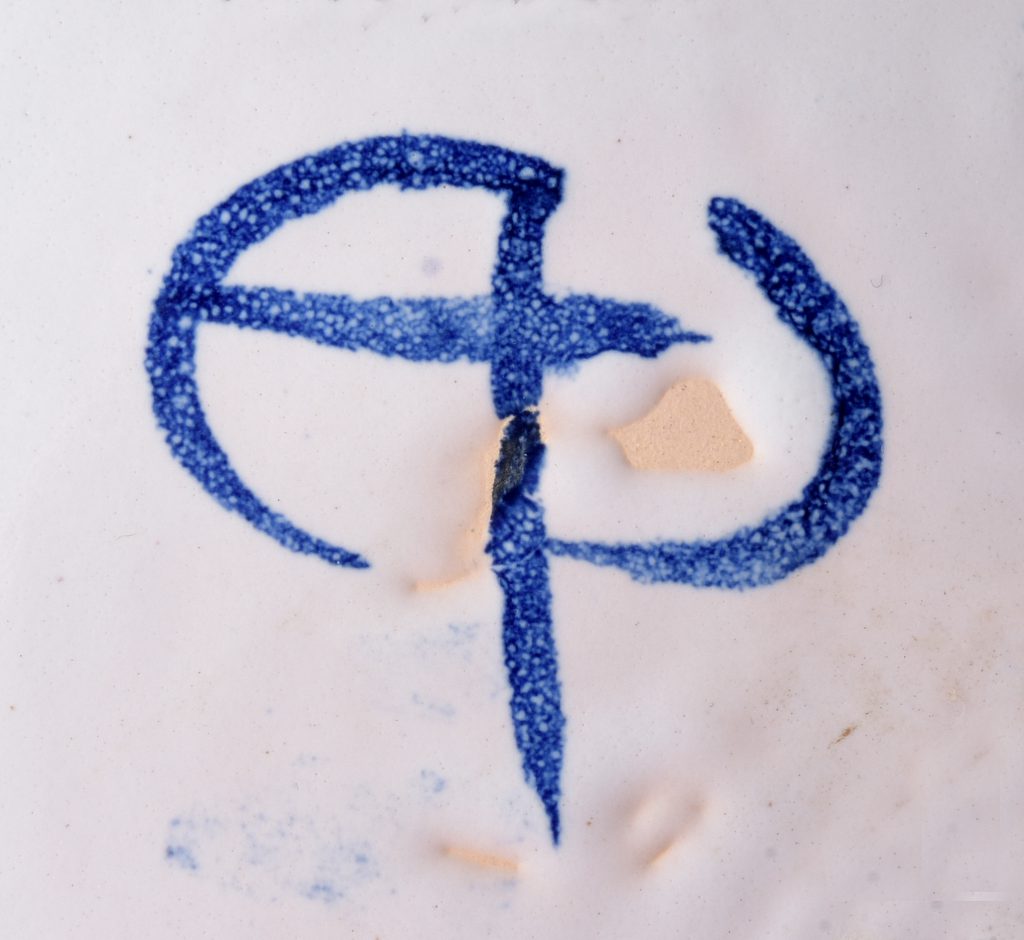
Maker’s mark (painted mark) of the ceramicist Annina Vital, Chur, Canton of Graubünden.
Marks (factory marks, makers’ marks) are primarily used to identify the maker, manufacturer or factory that produced the ceramic object. They usually attest to a high-quality or industrial production, and in Europe to a late date of manufacture (18th to 20th centuries). Marks can be found on all types of pottery or ware (earthenware, faience, refined white earthenware, stoneware and porcelain).
Marks come in a vast array of designs:

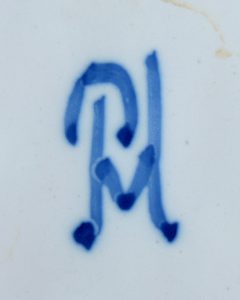
– Painted marks, painted using a brush; often as letters, names, symbols or crests.
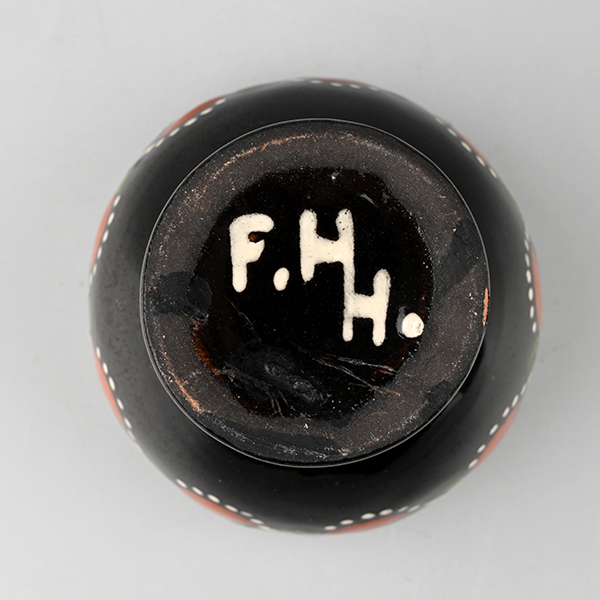
– Slip-trailed marks, painted using a slip-trailer, usually the same as that used to decorate the object.
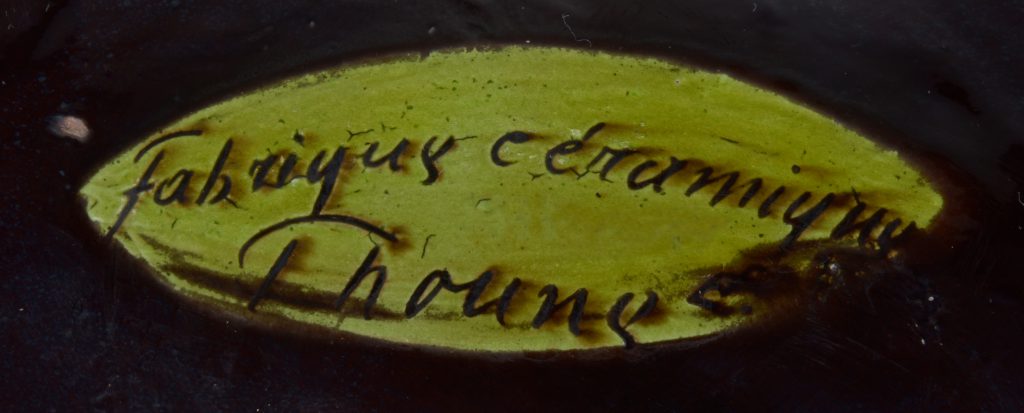

– Incised marks, incised directly into the soft clay or an area with a different colour.
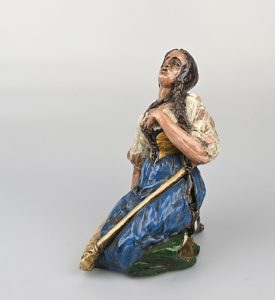
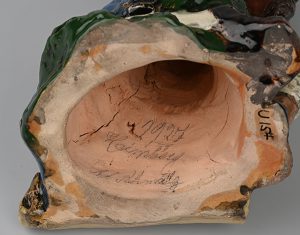
– Marks in lead pencil, written in pencil (or in sanguine) onto the fired clay, usually on the base or the inside of a figurine; in most cases this is not a maker’s mark but denotes the price.
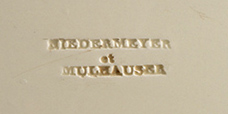
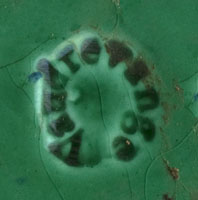
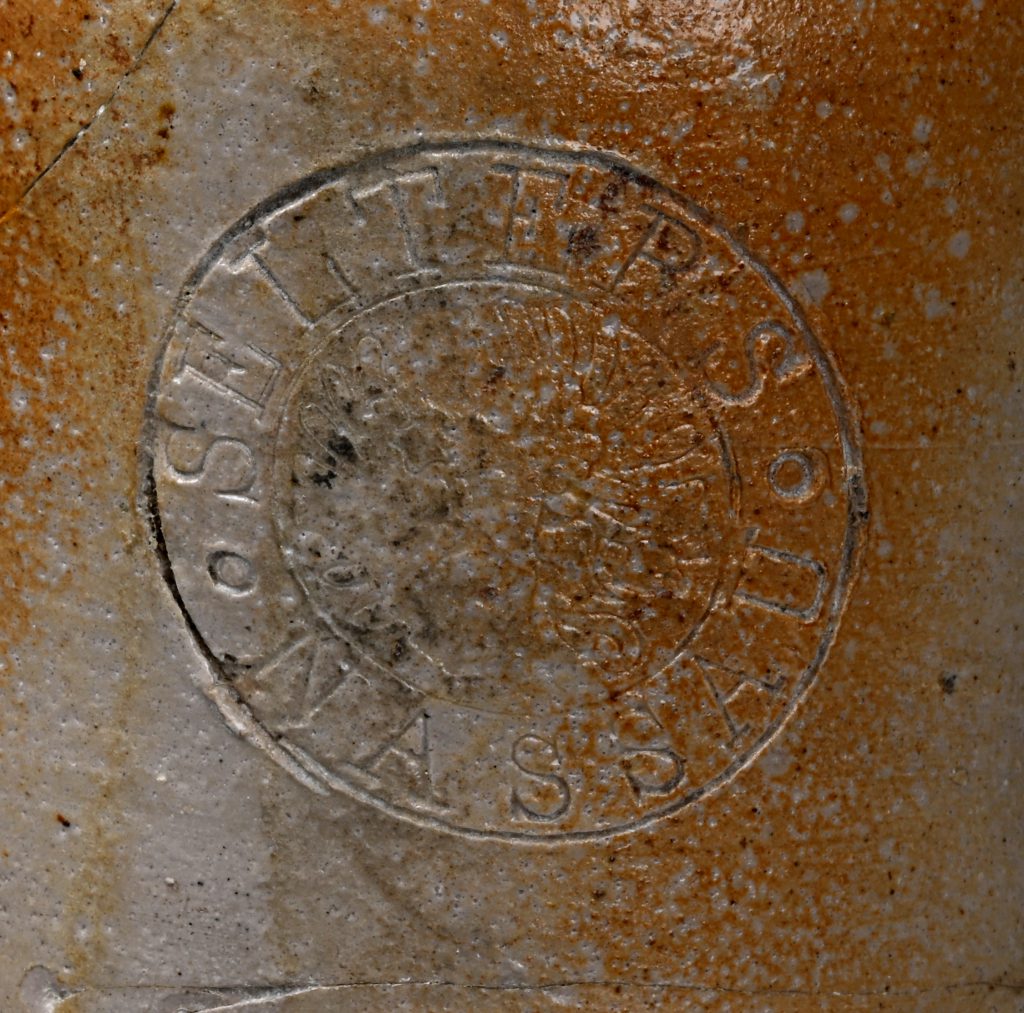
– Impressed marks, stamped or impressed in the clay using an implement. Marks on German mineral water bottles (denoting the individual spring or well) are impressed marks.


– Moulded marks (negatives), created when casting or throwing a vessel in a mould; it is often difficult to distinguish between a moulded mark and a stamped one.

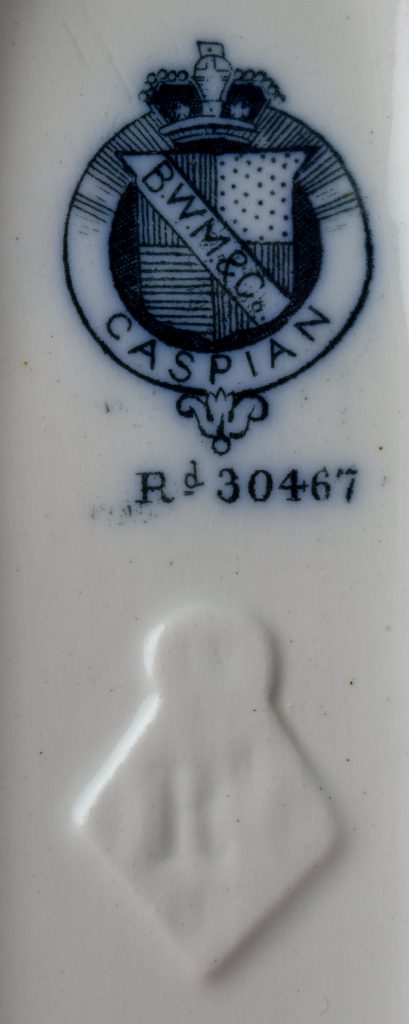
– Moulded marks (in relief); raised in relief either by casting in a mould or applied directly to the vessel, e.g. so-called diamond marks or registry marks
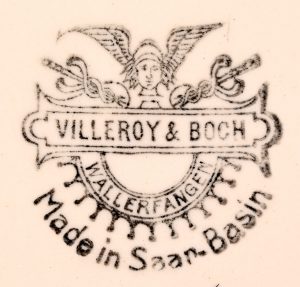
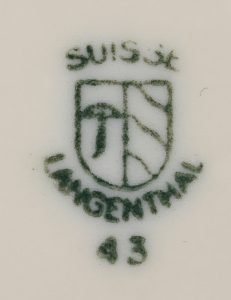
– Stamped marks, created using a rubber stamp, usually in coloured ink (black, red, green, blue). It can be difficult at times to distinguish between stamped and transfer-printed marks.
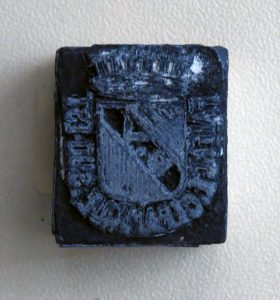
Rubber stamp used by the “Faïencerie du Midi, Varages, France“.
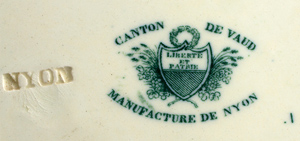
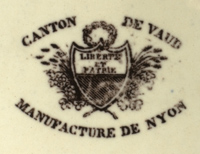
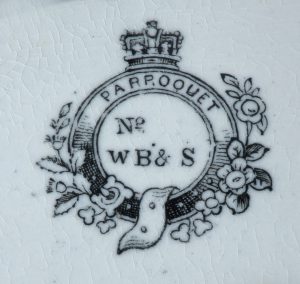
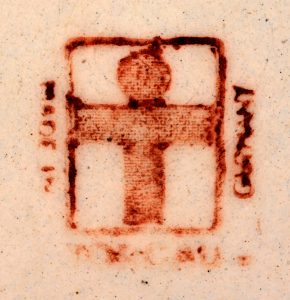
– Transfer-printed marks, either transfer or screen printed. It can be difficult to distinguish between stamped and transfer-printed marks. When in doubt, use “stamped mark”.
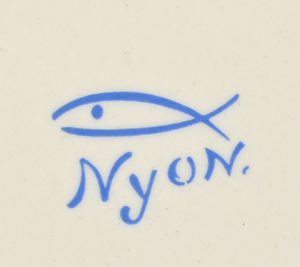
– Stencil marks, created using stencils made of paper, metal foil or sheet metal, usually applied under the glaze by means of a brush or airbrush.
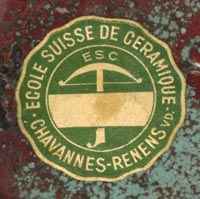
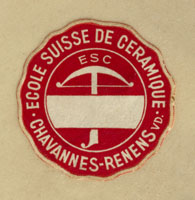
– Paper labels, usually printed and then glued on after firing.
Other groups of marks have different functions:
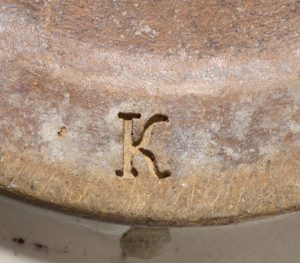
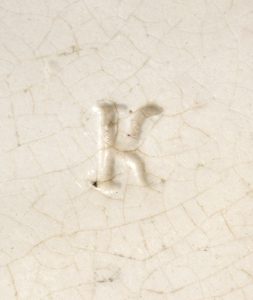
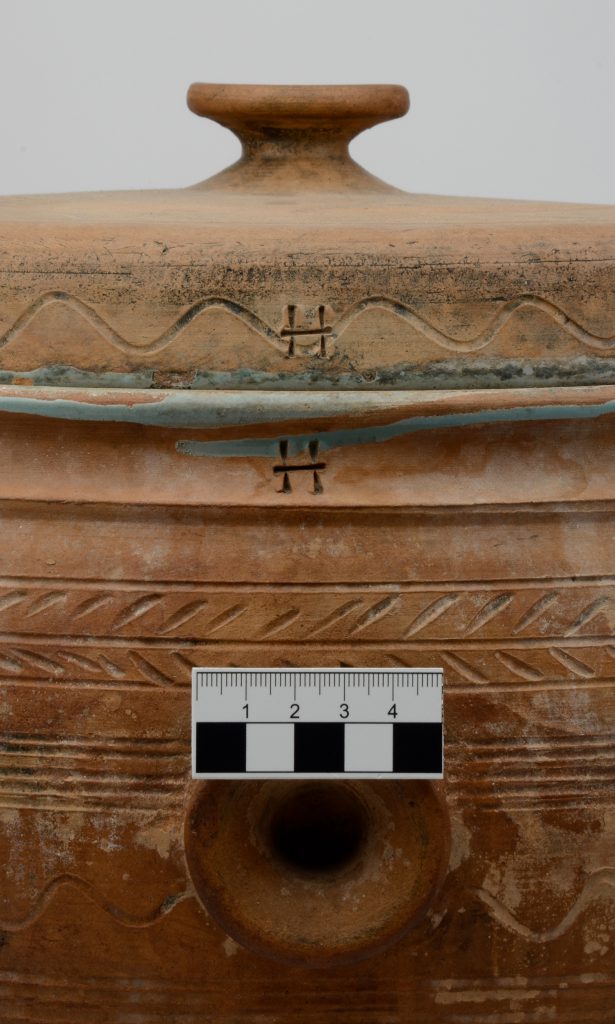
– Pairing marks; impressed numbers, letters or lines on both the lids and the bowls of pots, tureens or boxes, which help to pair the sections that belong together after firing; found, for example, on pottery from Bäriswil, Canton of Bern or St. Antönien, Canton of Graubünden.
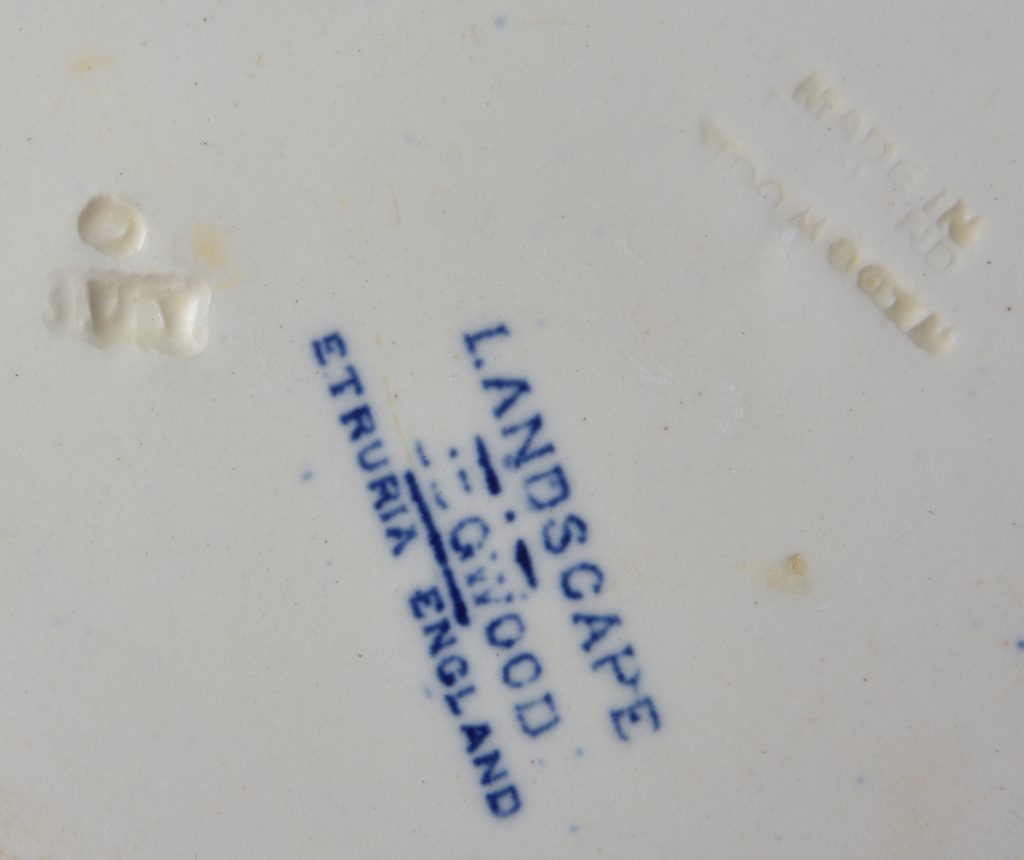
– Date marks (denoting the year and/or month of manufacture, often letters or combinations of numbers)
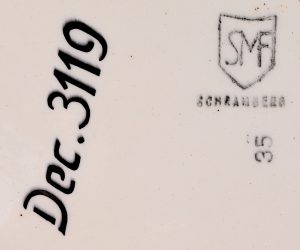
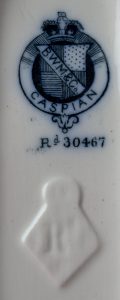
– Pattern marks, denoting the specific decorative design; in England the designs are state registered (registration numbers, Rd. marks), and allow the objects to be dated.
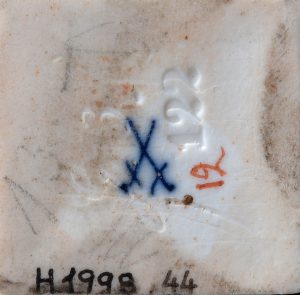
– Shape marks; used by factories or larger, more modern workshops to denote individual vessel shapes or types based on a specific list of types (sales charts, order lists, price lists).
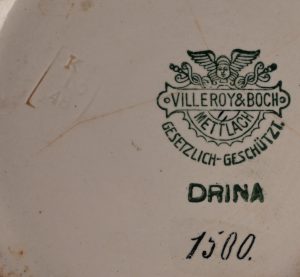
– Throwers’ or modellers’ marks (often numbers), used by manufacturers to calculate the output of an individual worker, if paid a piece-rate, and for quality control purposes.
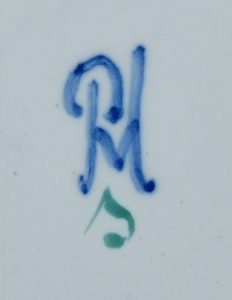

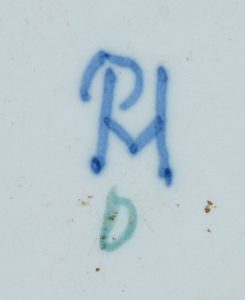
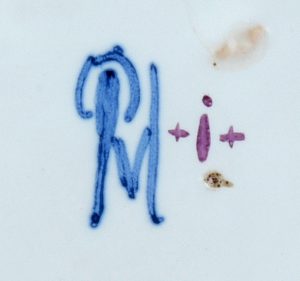
– Painters’ marks, denoting the individual painter/decorator, probably also used to calculate piece-rates.

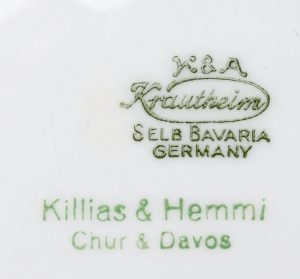
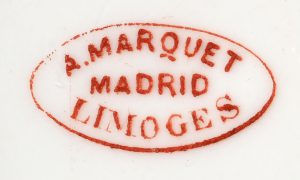
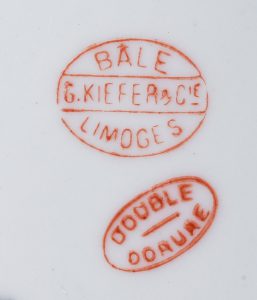
– retailers’ marks, applied by hardware dealers, who often bought unmarked “whiteware” and decorated it to the buyers’ specifications or by wholesalers of pottery, some of whom had their own production lines with manufacturers.
– Fabric marks, often numbers to distinguish between different fabrics (currently no confirmed examples in the database).


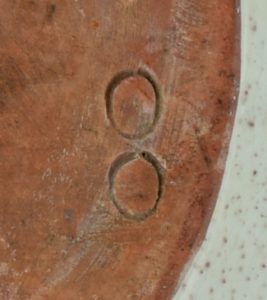
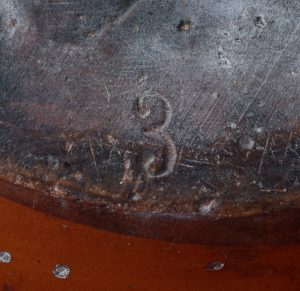
– Size marks, incised or impressed, usually numbers denoting the size of a particular type of vessel, as listed in the manufacturer’s catalogue of goods. These are very simple marks, and in some cases it is also possible that they refer to the makers or throwers, who were paid a piece-rate, so that the mark would have served to calculate the amount owed.
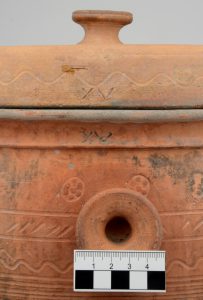
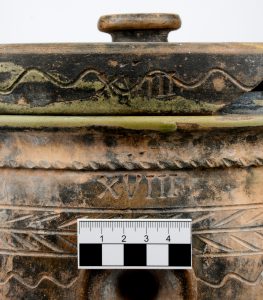
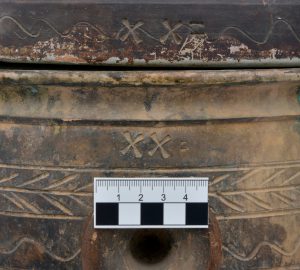
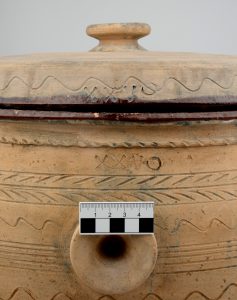
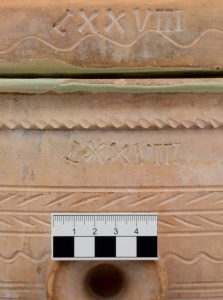
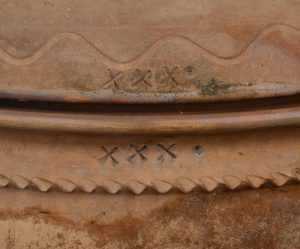
– Size marks (denoting capacity) can also be found on dye pots made by Christian Lötscher from St. Antönien (these examples have the new Swiss capacity of 1.5 litres) and, from the First World War onwards, on large stoneware storage pots from the Westerwald region in Germany (litre marks).

– Owners’ marks, incised marks added later, usually letters or combinations of letters denoting ownership.
Numerous lists of marks exist, both on paper and online (see links and references below)
Translation Sandy Haemmerle
German: Marken
French: marques
References (selection):
Graesse/Jaennicke 1997
Johann Georg Theodor Graesse/Friedrich Jaennicke, Führer für Sammler von Porzellan und Fayence. Umfassendes Verzeichnis der auf älterem und neuerem Porzellan, Fayence, Steinzeug, Steingut usw. befindlichen Marken, München / Berlin, 28. Auflage, 1997.
Tardy 1949
Poteries et faïences françaises, 1ère, 2ème parties et 3ème parties, 3ème édition, Paris 1971.
Tardy 1983
Les poteries-faïences-porcelaines européennes ; caractéristiques et marques, 1ère et 2ème parties, Paris 1983
Zühlsdorff 1994
Dieter Zühlsdorff, Keramik-Marken Lexikon. Porzellan- und Keramik Report 1885-1935 Europa (Festland), Stuttgart 1994 (2. Auflage ).
Links (selection):

